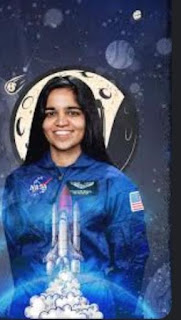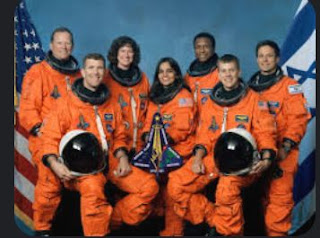The biography, age, early life career, accomplishments, and lifestyle of Kappana Chawla
An talented and inspirational astronaut, Kalpana Chawla overcame all obstacles to follow her aspirations. On March 17, 1962, she was born in Karnal, Haryana, India. She later became the first woman of Indian descent to
travel to space. Millions of people worldwide are still motivated by her incredible adventure and contributions to space exploration.
Kalpana showed an innate curiosity for the world around her from an early age. She was deeply interested in exploring uncharted territory and had a tremendous passion for research. She pursued her degree in aviation engineering with the support of her parents, who acknowledged her extraordinary talent and tenacity.
CHILDHOOD AND EDUCATION
At Punjab Engineering College, Kalpana earned her
bachelor's degree in aeronautical engineering in 1982. She then relocated to the United States to attend the University of Texas at Arlington for her master's program in aeronautical engineering. In 1988, she graduated with a doctorate in aerospace engineering from the University of Colorado.
Due to her outstanding credentials and experience, Kalpana Chawla was hired by NASA to work at its Ames Research Center in California. She contributed to a number of studies on boundary
layer turbulence, atmospheric analysis, and power-limited modeling of aircraft
ACHIEVEMENT
In 1994, Kalpana Chawla realized her childhood dream of becoming an astronaut when she was selected by NASA. She went on to complete rigorous training and became a part of the STS-87 mission, which was Columbia's 15th flight. On November 19, 1997, Kalpana Chawla made history as the first Indian woman to travel to space.
During the STS-87 mission, Kalpana served as a mission specialist and primary robotic arm operator. She contributed to various research experiments, including the study of sound propagation in space and the behavior of granular materials in a microgravity environment.
Kalpana's remarkable journey didn't end there. Encouraged by her successful first mission, she participated in the STS-107 mission, which was Columbia's 28th flight. Unfortunately, tragedy struck on February 1, 2003, when the space shuttle Columbia disintegrated during re-entry into the Earth's atmosphere. Kalpana and her six crew members lost their lives in the tragic accident.
HER DERIVED
The world mourned Kalpana Chawla's passing with great sadness. She was the embodiment of curiosity, tenacity, and the unwavering
pursuit of aspirations. Her legacy inspires young people to push boundaries and aim for the stars. Her contributions to the realm of space exploration were essential.
Numerous accolades and prizes have been given out worldwide in recognition of Kalpana Chawla's accomplishments. Among other awards, she was given the NASA Distinguished Service Medal, NASA Space Flight Medal, and the Congressional Space Medal of Honor. Additionally, she received the esteemed Padma Vibhushan, India's second-highest civilian honor, posthumously.
FINAL VERDICT
Beyond her career successes, Kalpana established a legacy of tenacity, fortitude, and breaking down barriers. "There is a path from dreams to success," she famously remarked. May you possess the foresight to recognize it, the guts to pursue it, and the tenacity to do so."
Numerous people are still motivated to follow their goals and go past any challenges by these words.
The University of Texas in Arlington, Kalpana Chawla's alma school, established the Kalpana Chawla Scholarship in Aerospace Engineering in her honor. The scholarship is a testament to her ongoing encouragement and support of future engineers.
The example of Kalpana Chawla's life shows that anything is achievable if one puts their mind to it. Her voyagefrom a small town in India to the vast expanses of outer space is a testament to the power of dreams and determination. Her legacy continues to inspire generations to follow their passions, break barriers, and reach for the stars.















0 Comments